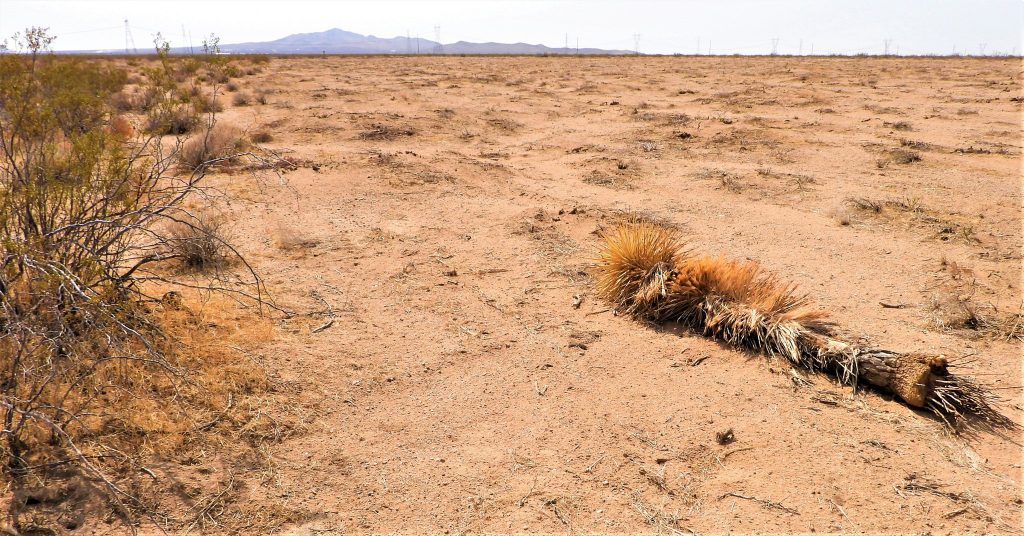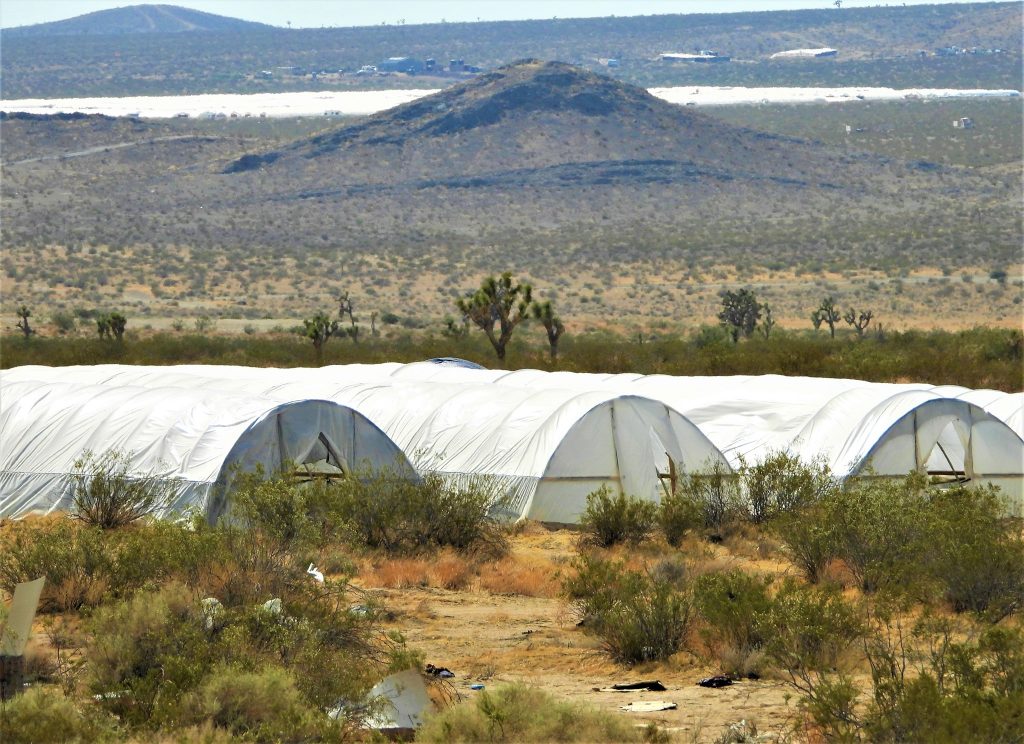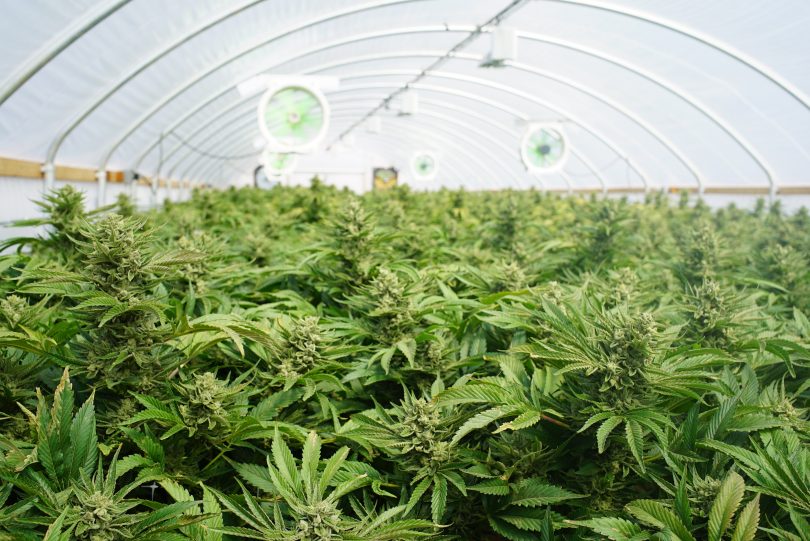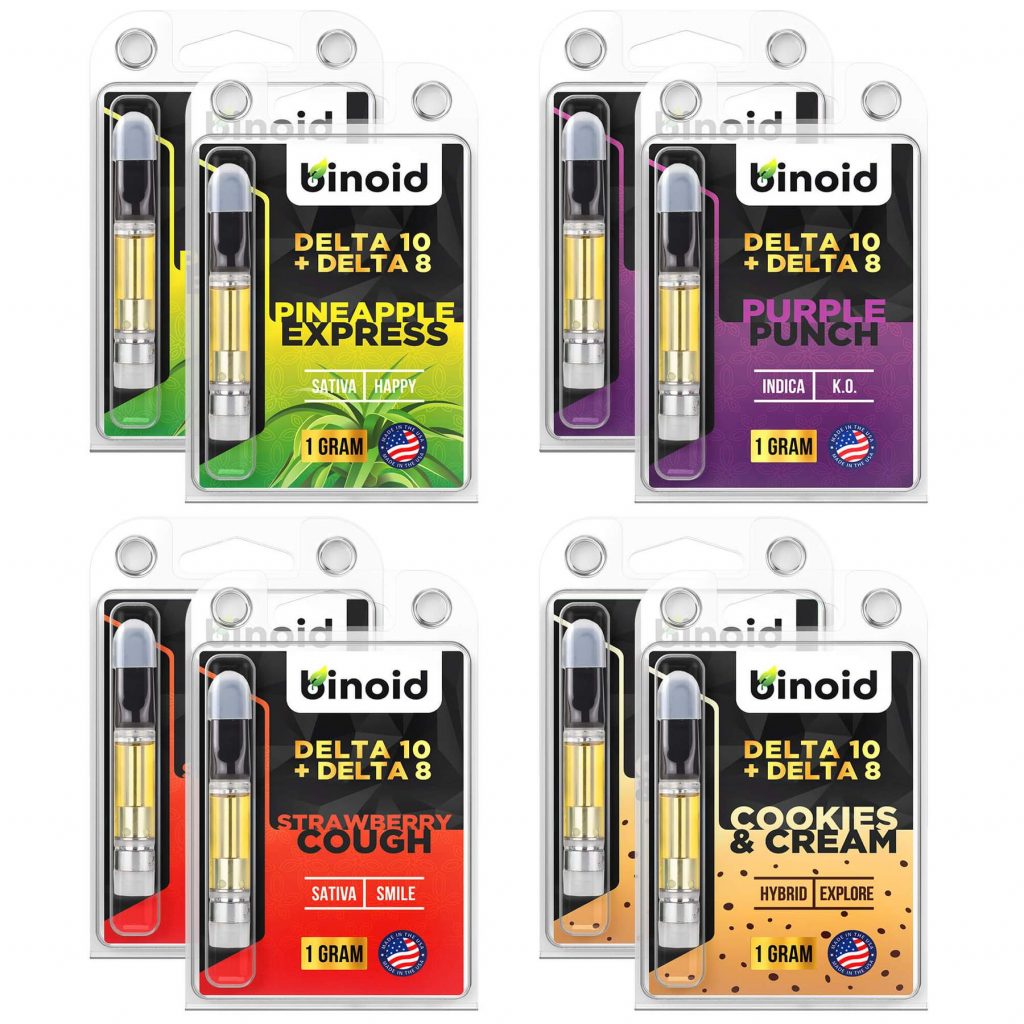The Mojave is a vast, forty-eight thousand square-mile stretch of wide open land dotted with captivating desert vegetation, charming small towns, compelling roadside attractions, and lately, a rising number of illegal cannabis grow ops.
Many in the industry already anticipated it would be this way, but cannabis legalization has not gone as expected in California. Not only is tax revenue short of the predicted mark, but the situation is actually so bad that a $100 million dollar industry bailout has been proposed. Seems strange, considering how many people we all know that smoke weed and use other cannabis products; but there is one major roadblock in the success of the golden state’s pot program – the still-thriving black market.
We all see the unlicensed shops with minimal overhead costs and no permit fees, offering prices and incentives that regular stores simply can’t compete with. But that’s not where it starts, the root of the problem begins with the thousands of illegal grow ops appearing all over rural parts of the state, the Mojave Desert as of late.
They are sometimes brushed off by locals because “it’s just weed” and many small communities in the US have bigger drug problems to worry about than pot. And yes, as someone that is a firm supporter of fair cannabis legislation and safe access for all, I fully understand that we could not have gotten to the point we are now without breaking rules along the way. However, as a naturalist and conservationist, I also see a different side to it. The problem here is not the growing of the pot (which I support and do myself), but rather, the way many of these large-scale cultivators operate.
The often-overlooked negative impacts of illegal grows – especially in a desert – run the gamut from tapping into scarce local water sources, to polluting the surrounding environment, producing unsafe low-quality products, and undermining the efforts of companies that are operating legally.
New: THC-O Super-Sativa
What is possibly most troubling… in this region of the world that is particularly strapped for water, over one thousand unlicensed cannabis grows have been discovered in the past few years. It takes about 150 gallons of water to grow one pound of weed. If each of these farms are growing upwards of a few thousand plants (at least), what does that mean for the future of the Mojave, its wildlife, and its residents?
The cannabis industry is so much more complex than others. Not only is it new and rapidly growing, but people working in this sector face many challenges that are hard to fathom for people working in nearly any other field. While most of our industry is on the up-and-up, there are still a few seedy things going on below the surface sometimes. Once issues like these are resolved, more people will have faith in the industry and it will be easier to push for fair legislation and safe access for all. For more articles like this one, make sure to subscribe to The Medical Cannabis Weekly Newsletter, your hub for all things industry-related.
Benefits of Growing at Home
I definitely do not want anyone to get the wrong idea here. I am 100% in agreeance with people being allowed to grow cannabis at home for personal use. I also believe most of the existing plant limitations (like 6 per household, for example) are too low. Home cultivation is gaining traction, according to a National Gardening Survey that found roughly 15% of households in legal states are currently growing cannabis or have previously tried to.
At the end of the day, there are undeniable benefits to growing your own flower. For example, lower costs, a consistent supply, and cleaner higher quality products are all things to look forward to with at-home cultivation. Growing bud is something every medical cannabis patient or recreational user should strongly consider, especially if you use daily and it’s something that is consuming a lot of your money.
That said, there is also a huge need for professional cultivators, because let’s face it, not everyone has the time or the green thumb for growing at home. Black market growers can get away with random strain names, vague descriptions, and wavering consistency; that’s not the case for legal commercial growers. Anyone actually following the rules has very strict regulations they need to follow when it comes to quality standards, lab testing, product labeling, and so forth.
Again, the issue in this particular situation is the way cannabis is grown at these illicit set ups. Let’s pretend all the illegal grow ops were being considerate of the environment and wildlife, procuring their water in legal ways, and not using dangerous pesticides in their products – then there would be absolutely no issue with growing illegally, even at a larger scale.
Environmental Impact
“Large-scale marijuana grows can inflict tremendous damage on desert lands and resources,” said Cody Hanford, deputy executive director of the nonprofit Mojave Desert Land Trust. “In preparation for growing, parcels are often scraped of vegetation, killing both plants and wildlife, including desert tortoise. Deep depressions are dug into the earth, and wells are dug to draw water from aquifers.”

According to the California Marijuana Enforcement Team (MET), a special unit tasked solely with investigating cultivation violations, there are over 1,000 confirmed illegal grow ops in the Mojave desert region of Southern California. It’s hard to say exactly how much pot is grown in at these illicit farms, but it’s a lot. For example, last month Antelope Valley law enforcement conducted a raid of 205 illegal cannabis grows which resulted in 131 arrests and the seizure of over 33,000 pounds of weed. At 150 gallons of water per pound of cannabis, that equals 4,950,000 gallons of water used by only a fraction of the illegal operations that have been currently discovered.
Twentynine Palms, my hometown, and the surrounding desert region known as Wonder Valley, is a particular hotbed for these set ups. The problem is this area is a true desert with very little rain or periods of humidity throughout the year. San Bernardino County averages 15 inches of rainfall annually, but 29 Palms only gets about 6 inches. While other illegal grows are situated in areas that at least make more sense geographically, like Humboldt County which averages 55 inches of rainfall per year, and is coastal so there is also more natural humidity in the air; desert grows are unsustainable in the long run.
To make matters worse, massive areas of important vegetation and crucial wildlife habitats are being gutted to make room for these enterprises. “Our desert is being destroyed as we live and breathe,” says Tom Egan, Wildlife Biologist and California Desert Representative at Defenders of Wildlife. “Barren expanse levelled for unregulated cannabis cultivation – in a very dense tortoise population area designated as critical habitat for this species and per our research, may be completely extirpated from the western Mojave wilds within 20 years. Further, the area is crucial habitat for the threatened Mohave ground squirrel.”
“Some people have a deep abiding respect for the natural beauty that was once this country… And some people don’t…” Egan added.
Also of major concern is the use of dangerous pesticides. Not only is that bad for consumers who are potentially smoking pot laced with toxic chemicals, but runoff and disposal of these materials is threatening the landscape in unimaginable ways. At a recent bust in Lancaster, Bureau of Land Management (BLM) and Fish & Game were called upon the discovery of two dead bears near the area. Necropsy showed that illegal pesticides were the cause of death. It has also been reported that it’s common for growers at these sites to bury containers of sewage and other garbage below the desert floor. After windstorms, a lot of trash can surface.
Most Precious Desert Resource
Let’s talk a bit more about water. We already discussed how much water the region gets and an estimate of how much goes toward illegal pot; but what we didn’t cover yet is how exactly these cultivators are even obtaining so much water. The short answer, a lot of it is stolen.

Pot growers are certainly not the only ones stealing water, and with California experiencing record droughts, water theft across the state is at an all-time high. There are numerous ways this can be done – like pulling water from remote filling stations, pumping water from rivers, lakes, dams, reservoirs, and pipelines, tapping into area fire hydrants, and even stealing water from homes and farms that run off private wells. By the second quarter of this year, 126 Californians have already reported water thefts to state authorities, which is more than double from a decade ago.
Some thieves have even resorted to conducting elaborate break-ins of pressurized water mains, a dangerous and destructive method referred to as hot-tapping. In Antelope Valley, there used to be an average of 2 hot-tapping incidents per year. In 2020, about a dozen had been reported and that number is still rising. Every water main break-in can result in “over $10,000 worth of equipment damage”, says Anish Saraiya, public works deputy for the Los Angeles County Supervisor.
Undermining Legal Operations
Starting a business in California can be difficult, but opening a cannabis business in the state is especially challenging. Don’t get me wrong, this industry can make you an incredibly successful in Californian, but it won’t come easy. Whether you intend on opening a dispensary, running a delivery service, or plan to set up as a cultivator, prepare to spend a ridiculous amount of money on licensing and fees, more than startups in any other industry.
Then, you will need to pick the location of your business. This can be problematic if you’re growing because it will require a lot of space, which is not cheap in California, and you have to find an area that allows cannabis cultivation, as it is prohibited in many localities. Most experts agree that it can take an initial investment upwards of $500,000 to get your foot in the door of California’s legal cannabis industry – not to mention the annual overhead costs, exorbitant taxes, and the list goes on and on.
All that blood, sweat, tears, and cold hard cash, and legal operators are still stuck competing with underground businesses who do not have to worry about any of the aforementioned obstacles. Cameron Wald, executive vice president of Project Cannabis, which owns four stores in LA, said the illegal dispensaries can profit in ways completely out of reach for legal businesses. “We have outrageous price compression that we have to see at our stores to compete with people that are not paying their taxes,” he said. “They’re not paying their permitting fees. They’re not paying the city.”
New Frontier Data, a Denver-based company that studies cannabis trends, estimates there are $70 billion in illegal marijuana sales nationally — making it seven times the size of the legal market. “This means the legal market is capturing only a fraction of total demand,” the company said in a summary of U.S. cannabis demand trends released this month.
Those operating illegal businesses aren’t bound by the same laws that legal ones are, such as limits on daily sales, laboratory testing of products, and zoning regulations. Any legal grower or dispensary owner that breaks the law can be fined thousands of dollars per week and eventually get shut down. Illegal operators that get shut down often save so much money throughout the year from fees and taxes they aren’t paying, that they are able to reopen in a matter of weeks, a process that can take years for anyone working through the legal channels.
Local Voices
“When our family moved to Twentynine Palms nine years ago, it was peaceful and calm,” said local Amy Tessier, 38. “The invasion of pot farms changed all that. … We don’t go for walks under the stars anymore. It just doesn’t feel safe.”
“The smell of pot farms smacks me in the face every day,” said Patricia Domay, 80, longtime resident of Landers. “It’s like a bad dream. New ones are popping up every day, and there’s not a sheriff’s deputy or code enforcement officer in sight.”
Patricia Horwath, a Wonder Valley resident of 23 years, looks off into the distance of the creosote-lined desert horizon. “Straight ahead are just a few of more than 20 illegal cannabis grows that have sprouted within a few miles of my home over the past year or so.”
“Some [people] carry guns,” she added, with a sigh of frustration, “and have lookouts who sit in trucks and vans, closely scanning — and even photographing — people and vehicles passing by.”
She also mentioned a very awkward encounter with a stranger that showed up at her house one day in the spring. Getting straight to the point, he told Horwath that he needed some of her land to grow weed. She declined, along with several other local property owners who shared similar stories.
“The subjects at these locations are intimidating the residents by brandishing firearms and not allowing them access to the areas,” says San Bernardino County Sheriff John McMahon. “The individuals cultivating illegal cannabis become territorial, shoot at each other, and steal the cannabis being grown.”
Final Thoughts on Illegal Cannabis Grows
To sum it all up, it’s not the illegal growing of cannabis, in and of itself, that gets most people riled up. It’s the environmental destruction and element of crime that often trail not far behind. We have come very far in bringing cannabis to the mainstream, but black market operations that pollute the land, scare locals, and take money away from legal operators paint the entire industry in a negative light – making it that much more difficult to pass progressive legislation that could benefit everyone.
Thank you for stopping by CBD TESTERS, your hub for all things cannabis-related. For more articles like this one, make sure to subscribe to The Medical Cannabis Weekly Newsletter.












